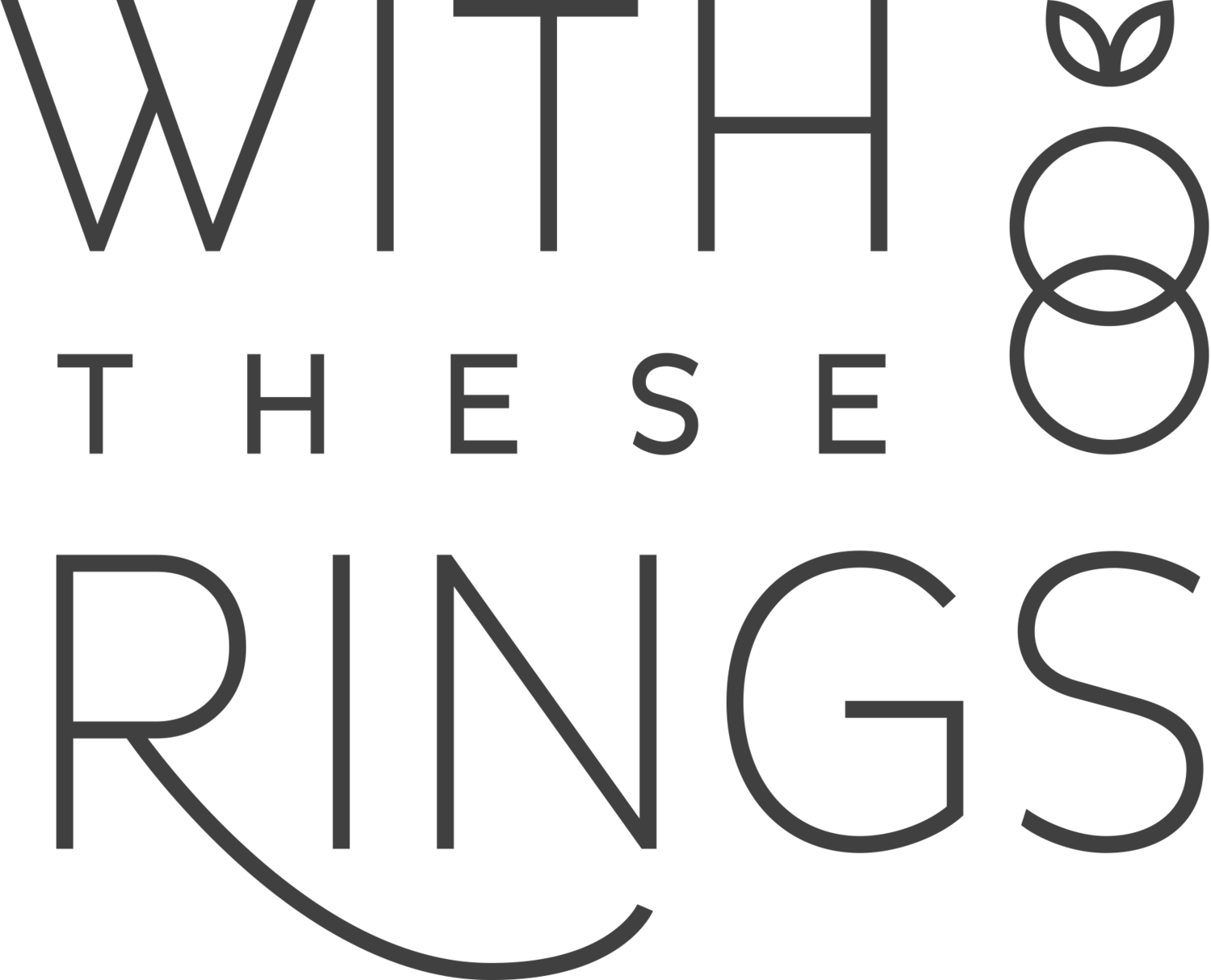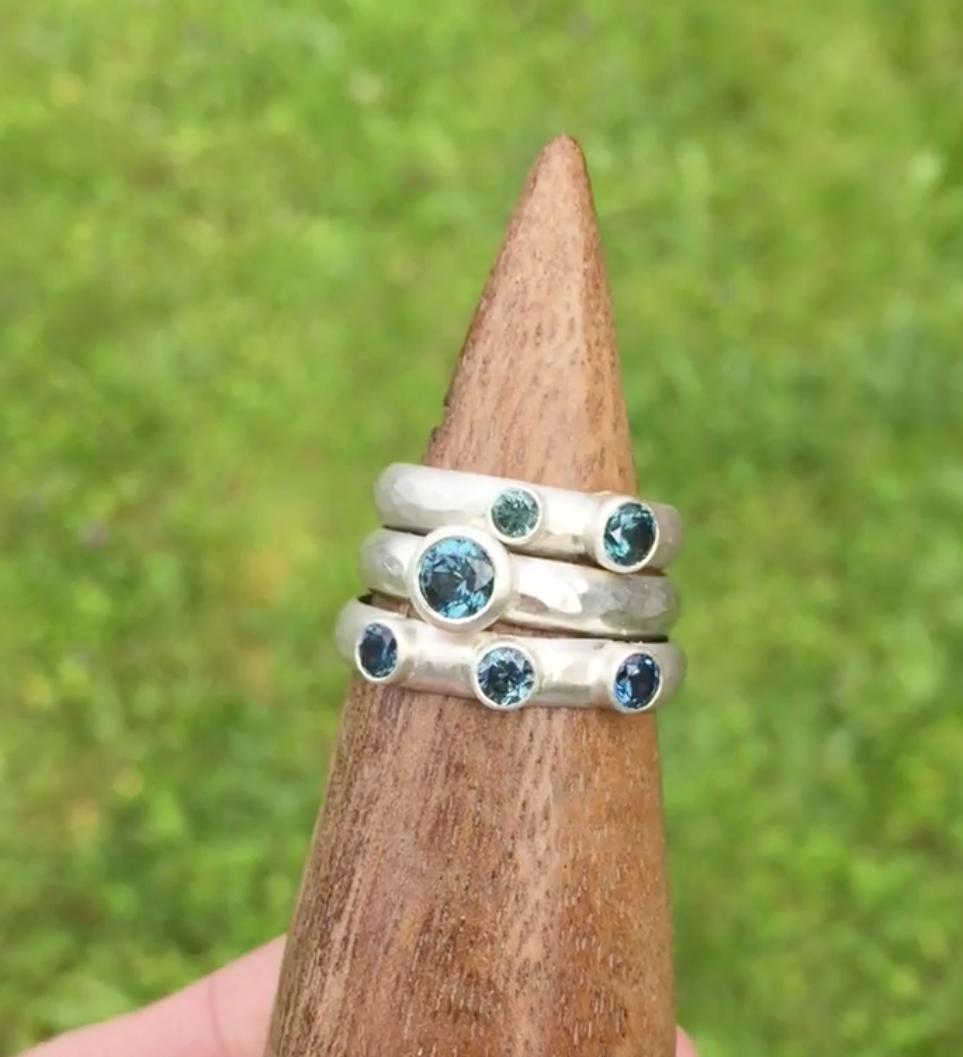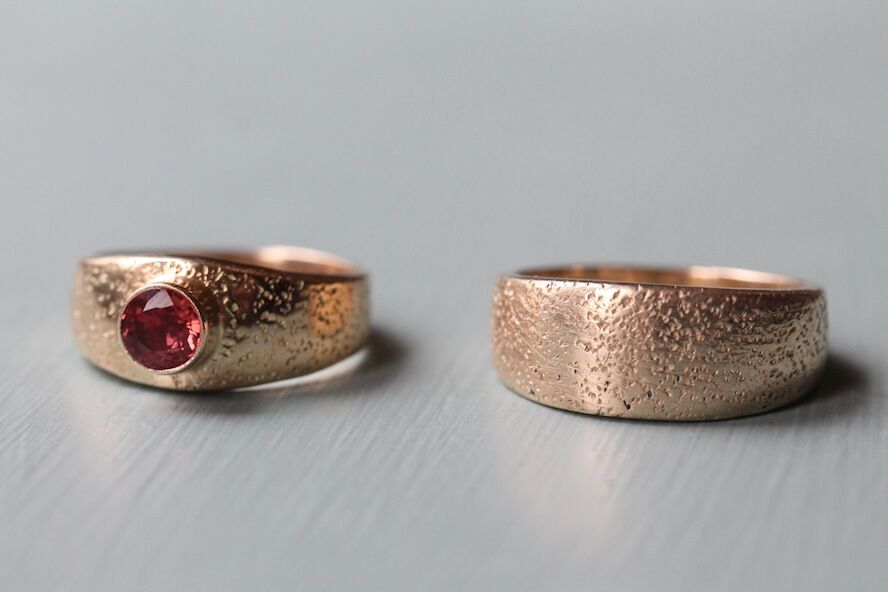Some people want to add a little (or a lot of) sparkle to their rings by incorporating stones. Diamonds are generally the first stone that comes to mind when people picture an engagement ring. For reasons ranging from taste to budget to politics, some people are leaving diamonds behind. So where do you start when choosing a stone? First, keep in mind that rings go through more wear and tear than most jewelry, especially wedding rings since they are typically worn daily. Second, remember that all stones are not created equal, so be sure that you consider how your stone choice will hold up so that you can love wearing your ring for years to come.
Lab grown diamond engagement ring handmade by Ryan.
Diamonds
Many of my couples often mention the infamous De Beers advertising campaign (that turned the diamond engagement ring into a modern day tradition) as the reason they are looking at alterntives. While it is true a De Beers ad successfully made diamonds the standard choice (and I agree that might feel totally slimy) it is not a reason to dismiss them entirely if you do want a stone. After all diamonds were used in wedding jewelry long before and for good reason...there is nothing harder! (seriously, google their industrial uses) Many stones will scratch or become cloudy over time as they spend their days knocking into things harder than themselves, but not diamonds. Decades down the road (aside from needing an occasional cleaning) the surface of this stone will look the same as the day you got it.
At With These Rings we are able to outsource three types of diamonds, all ethically sourced and equally beautiful.
Canadian mined
Lab grown
Recycled
We also offer couples the option to bring in their own family stones for their rings. Such a wonderful way to add more meaning to your ring, along with the most efficient way to recycle!
Mohs Hardness: 10
Sapphires and Rubies
White sapphire engagement ring hand carved by Fergie and Sam.
Sapphires and rubies are quite durable and great stone choices for wedding or engagement rings. These stones are each a type of corundum and their colors come from different impurities, typically metals, trapped inside the structure. Rubies range from pink to red. In addition to the commonly known blue, sapphires come in a rainbow of colors including varying hues of pink, padparadscha, orange, yellow, green, teal, purple, colorless/white, and black. They can even be found with multiple colors in a single stone. Historically sapphires have been featured in engagement rings (including Princess Diana’s) because they represent loyalty, honesty, and devotion. Sapphires can be found locally, as close as Montana. Some of my clients have even gone out to dig up their own!
White sapphires are a common choice as a diamond alternative due to their durability. But one thing to keep in mind is that they lack the sparkle and fire of a diamond.
Mohs Hardness: 9
Rose gold bands and moissanite engagement ring handmade by Jonathan and Ashley.
Moissanite
Moissanite is a rare mineral that was discovered in a meteor crater during the Victorian era. Today it is most commonly man made, grown to have the same chemical and physical properties of that unique mineral. Moissanite is actually harder than sapphires and rubies but still not quite as hard as a diamond. It does however surpass the diamond in its fire, the colorful sparkle that you see when your stone catches the light. Moissanites have a much lower price point than diamonds. Also since these stones are man made they are a completely green and ethical choice. These qualities make moissanite an excellent alternative for someone who wants the look of a diamond, but not a diamond.
We can also outsource moissanites in a variety colors and even vintage cuts for people who want something a little less traditional, but still want the durability and sparkle.
Mohs Hardness: 9.25
Stone Size
Did you know that 1 carat diamond will be smaller in size than a 1 carat sapphire or moissanite? This is because carat refers to the is the weight of the stone and a diamond is more dense than the other stones. So if you are looking at a variety of stones, I recommend thinking in millimeters rather than carats to keep things consistent across all of the different types of stones.
A few notes on "Hardness"
Mohs Hardness Scale c/o GEMOLOGICAL INSTITUTE OF AMERICA INC.
People often learn about the 1-10 Mohs hardness scale and think that means that sapphires and diamonds are very close in their hardness. So I do think that it is important to share a visual of what that scale actually looks like. You can see that diamonds are many times harder than corundum (both sapphires and rubies).
When talking about the hardness of the stone we are simply looking at the surface of a stone and how easily it will scratch. In other words, how many objects will you interact with everyday that are harder than your stone? Some stones are very soft compared to other materials which is why they scratch and/or turn cloudy (a cloudy surface is just a surface that is completely covered in fine scratches).
Fun science fact: A diamond is definitely your hardest option, but just like most other gemstones if you smash it with a hammer and it will absolutely break. This is because the structure that makes it so hard also makes it brittle. (This is one reason why it is important to consider the cut of your stone. Some cuts can have a very thin edge which can lead to chipping over time.) On the opposite end of the spectrum jade has a very soft surface (around 3 on the Mohs scale) but is very "tough" or hard to break which is why it is often carved into bracelets.
Some people do decide to incorporate softer stones into their rings for a variety of reasons. As someone with a silver (read: very soft) wedding band with no stones, I totally get it! I appreciate how things wear and change with time. I just want to make sure that my couples know what they are getting into. With soft stones odds are likely that you might have to replace them down the line. If you are considering a softer stone I am happy to talk with you about your options and the best setting choices to help keep it safe for as long as possible.
And remember that stones are optional! Don't feel like you need to add a stone to make it official or special. I can't tell you how often people look at my very simple ring and say something like "but you're a jeweler, you could have had whatever you wanted." I am always happy to let them know that I do have exactly what I want. And I would like for you to have that too, whatever that looks like for you!









